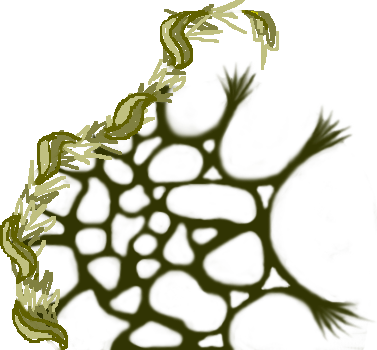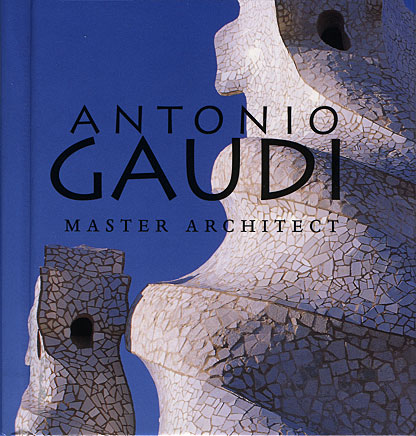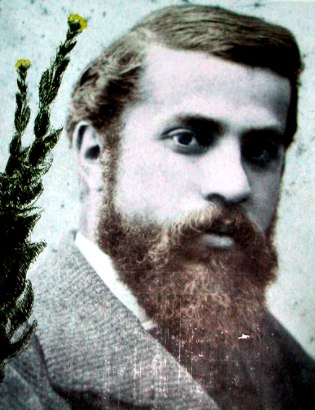












 |
 |
 |
 |
 |
 |
 |
|||||||
 |
 |
||||||||||||
 |
|||||||||||||
 |
|||||||||||||
 |
|||||||||||||
 |
|||||||||||||
 |
Antonio Gaudi Barcelona's great architect, Antonio Gaudi, changed the face of his city. Facing discrimination and hardships as a child he had achieved goals that none could ever dream of. Architecture with inspiration from the natural world, he had created his own style of gothic architecture. He has created buildings of such elegance and allure only captured by mother nature herself. Curves, angles and images one would be fooled to think were living things, this amazing architect has designed with such care as to fool the critical human eye. The beauty of his achievements evokes appreciation for the real world and admiration of his genius. |
Growing Up
Antonio Plàcid Guillem Gaudí Cornet was born on June 25, 1852, in the province of Tarragona. His father, Francesc Gaudí Serra, was a coppersmith and his mother, Antonia Cornet Bertran was the daughter of a coppersmith from Reus. As a child Gaudi suffered from rheumatism. Because of this he could’t go for long walks, which caused him to stay close to home. The fact that he was always close to home gave him much free time, which he used to observe nature and its design. Some believe that because of his exposure to these ideas it had been a major factor in his greatest qualities: observation and the analysis of nature. |
 |
 |
His Influences
Gaudi developed his thought by looking through medieval book, gothic art, illustrations of native structures and observing nature and its form. In the beginning of the Nineteenth Century came the arrival of the Arte Nouveau which broke the straight line and sharpness of the previous. Gaudi wasn't against this adjustment and created his own style. The idea that ornament was the origin of architecture stated by John Ruskin greatly influenced him. When he had first started to develop his style he was greatly influenced by Viollet-le-Duc's book on medieval French architecture from the eleventh to the sixteenth centuries. Also, my books written by William Morris. |
The End As he grew older he had less care for his appearance. He didn't conform with societies demands and dressed without much care. In fact, when he had died after being run over by a tram, no one had recognized him. The driver didn't want to take a poor old man to the hospital, which resulted in a fine. Gaudi did not like to be in the public eye, he didn't speak with journalists and avoided cameras. Thus there are very few photographs of this great architect. He had died at the age of 74 (June 12, 1926). He was well respected in his home of Barcelona, half of the city dressed in black to give homage to this man who had become popular even though not many had ever met him. He was buried in the crypt of the Sagrada Famillia which he had spent the last 43 year as of his life though he did not live enough to see his work completed. |
 |
Major Works The "Templo Expiatorio de la Sagrada Familia" (Barcelona) La Pedrera Building (Casa Milà, Barcelona) The "Casa Vicens" (Barcelona) The "Casa Batlló" (Barcelona) The "Finca Güell" (Barcelona) The "Palacio Güell" (Barcelona) "La obrera Mataronense" (Mataró, Barcelona) "El Capricho de Comillas" (Santander, north Spain) The "Palacio Episcopal de Astorga" (León, NW Spain) Schools of the "Sagrada Família" The "Casa Calvet" (Barcelona) The "Colegio Teresiano" (Barcelona) The "Casa Botines de León" (León) "Las Bodegas Güell (Gaudí-Berenguer)" (Garraf, Barcelona) The crypt of the "Colonia Güell" (Sta. Coloma de Cervelló, Barcelona) The Park Güell (Barcelona) Bellesguard (Barcelona) Restoration of the Cathedral of Mallorca (Mallorca) Lampposts for the City of Barcelona Minor Works Own desk Business card for himself Showcase for the gloves shop of Esteban Comella Furniture for the "Palacio del Marqués de Comillas" The Gibert Pharmacy (Barcelona) Relation between Gaudí and the religious of "Jesús-María" Altar for Bocabella Oratory Desk for his own eating-room in Sant Feliu de Codines Priest house and office of Gaudí in "la Sagrada Família" Pavilion for the Transatlantic Company Tomb for the Güell family in Montserrat House Clapés Restoration of the doctor Santaló house Standard of the choral society Feliuà Standard of "reusenses" (people from Reus) residents in Barcelona, dedicated to the Virgin of Misericordy of Reus "Panteón Nonell" in Lloret Sant Gervasi de Cassoles Theatre Santa Pacia's Church flooring (Sant Andreu) Reminding of Miscantano for Mr. Norbert Font and Sagué Decoration of the "Marquesa de Castelldosrius" house Door of Finca Miralles (Barcelona) Mountain refuge of Catllarás in Castellar de N'Hug Artigas Garden, in la Pobla de Lillet The" Casa Graner" The "Talleres Badia" The "Sala Mercè" Project of bridge over the "Torrente de Pomeret" Pulpit for the church of Blanes Project of chasuble for Girona Tower of Damián Mateu, in "Llinars del Vallès" Standard for the locksmiths guild Street Lamps of Vic Restoration of the Cathedral of Manresa Bust portrait and project of monument to Doctor "Torras y Bages" Dedicatory to "Orfeó Català" (Catalan Choral Society) Showcase glass Plandiura Pulpit for Valencia I Mistery of "Gloria de Montserrat" Café Torino Drawings of the tribute to "Rector de Vallfogona" |